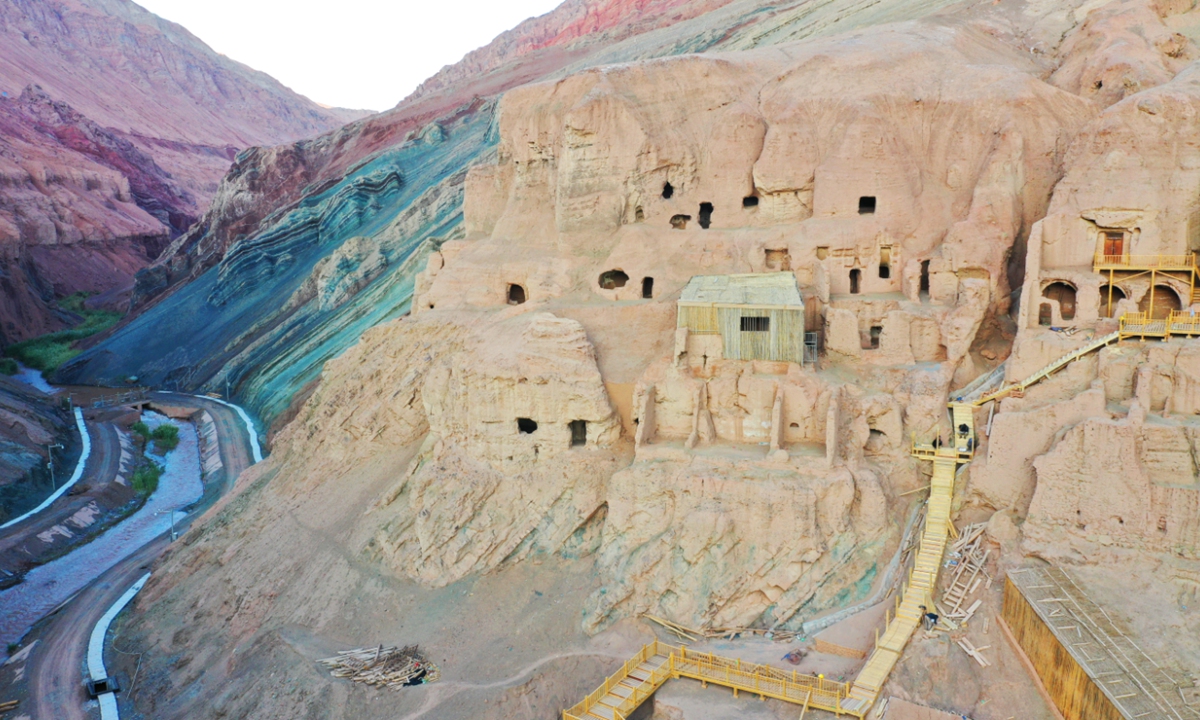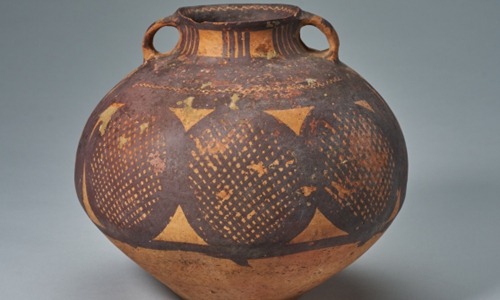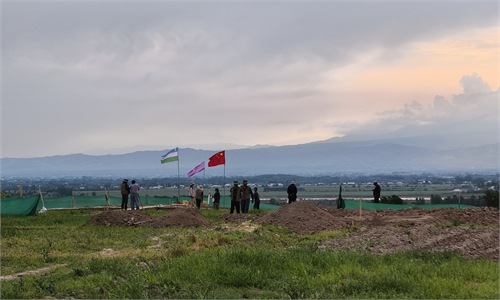ARTS / CULTURE & LEISURE
Millennium-old heritage sites open to public for first time
Global fascination with ancient Silk Road surges

Tuyugou Grottoes in Turpan, Northwest China's Xinjiang Uygur Autonomous Region Photo: VCG
Two ancient Silk Road sites in China - the Tuyugou Grottoes in Turpan, Northwest China's Xinjiang Uygur Autonomous Region and the Xuanquanzhi Ruins in Dunhuang, Northwest China's Gansu Province - have drawn a surge of visitors since opening to the public during the May Day holidays.Qiu Jian, head of the Gansu Provincial Cultural Heritage Bureau, told the Global Times that China's efforts to protect and showcase Silk Road heritage align with a growing worldwide fascination with the ancient trade route. "By opening these sites, we hope to create a systematic, visual narrative of the Silk Road, fostering deeper cross-cultural understanding," he said.
The Tuyugou Grottoes, comprising 157 caves, three above-ground temples, and nine Buddhist stupas, date back to the 5th century and remained in use through the Five Dynasties (907-960) and Song Dynasty (960-1279).
Archaeological findings from the site include multilingual scriptures in Chinese and Old Uygur, along with Buddhist, Daoist and Manichaean manuscripts, underscoring the region's historical role as a crossroads of religious coexistence.
"After the opening, there was a surge of tourists. They showed much enthusiasm toward those caves," Ding Xiaolian, a deputy director of the Turpan Cultural Heritage Bureau, told the Global Times on Monday.
She noted that there are three permanent local tour guides at the site, and they have received specialized training to enhance visitors' experience.
The site also implemented a real-name reservation and visitor cap system during its three-month trial operation, with a daily limit of 300 visitors and one booking per person per day.
"We plan on enhancing the appeal of the caves among visitors, along with adding supporting facilities, including the expected establishment of digitalization devices to help tourists better understand the site," Ding said.
The Tuyugou Caves join a growing network of Silk Road cave sites that have opened to the public, including the Bezeklik Thousand Buddha Caves, Shengjinkou Grottoes and Jiaohe Ruins. Together, they have formed a cultural corridor that is breathing new life into Turpan's tourism and heritage economy, the Xinhua News Agency reported.
The Xuanquanzhi Ruins in Dunhuang, the other site, offer visitors a glimpse into the logistical backbone of the Han Dynasty (206BC-AD220).

Xuanquanzhi Ruins in Dunhuang, Northwest China's Gansu Province Photo: VCG
The only excavated Han-era postal relay station, it served for over 300 years as a critical hub for couriers, diplomats and merchants traversing the Hexi Corridor.
The site, added to UNESCO's World Heritage List in 2014 as part of the "Silk Roads: the Routes Network of Chang'an-Tianshan Corridor," has drawn global attention but has faced challenges due to its remote desert location.
Visitors often found the stark Gobi landscape lacking in immersive experiences - until now.
To bridge the gap between preservation and accessibility, a full-scale replica of the Han-era post station has risen beside a modern highway near the city of Dunhuang.
Built with traditional rammed-earth techniques, the complex features winding streets and a restored "Xuanquanzhi Dining Hall," offering travelers food, water and relaxation - much like its ancient counterpart.
Meanwhile, the original Xuanquanzhi site now features elevated wooden walkways that trace the station's layout, paired with 24/7 surveillance and patrols to protect the ruins.
"We aim to balance safety with an engaging visitor's experience," Wu Jinwen, director of the Xuanquanzhi Site Preservation Institute, told the Global Times.




